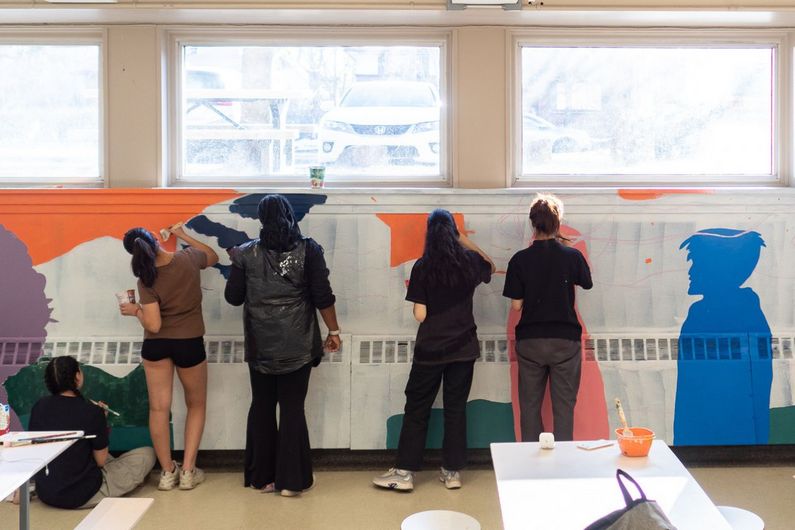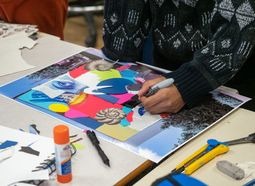Making mural art helps teens cope
- UdeMNouvelles
04/08/2024
- Martin LaSalle
School of Psychoeducation doctoral candidate Rocio Macabena Perez finds that UdeM's extracurricular Art en tête program reduces depressive symptoms in Quebec high-school students.
In Quebec's 2016-17 health survey of high-school students, 33 per cent in grades 9, 10 and 11 reported experiencing high levels of psychological distress. And in 2021, a significant 6.1 per cent said they had been diagnosed with an anxiety-depressive disorder, a 3.7-point increase from 2008.
While studies have found that mental-health programs to alleviate these symptoms are effective, little attention has been paid to how students can be be helped by participating in after-school activities.
To find out, Rocio Macabena Perez, a Ph.D. candidate in Université de Montréal's School of Psychoeducation, conducted a mixed-methods research project in which Grades 9, 10 and 11 students participated in an extracurricular program called Art en tête.
Her findings were reported last November in the Canadian scientific journal Revue de psychoéducation.
A mural-art program, Art en tête "supports and promotes the psychosocial and academic adjustment of students with social and emotional difficulties, including anxiety and depression," said Macabena Perez, who created and coordinates the program.
Offered since 2021 by the Montreal non-profit organization MU, Art en tête was born in response to needs identified in schools and launched through an innovative, long-term collaboration between community members, hospitals, school sand universities.
50 teenage participants
Macabena Perez followed 50 young volunteers (average age 15½) at four Quebec high schools. In the first year, two groups took the Art en tête program while the other two served as the control group and then participated in the program the following year.
Her research protocol called for the students to attend art workshops and then create an indoor mural at their school. They worked at it for two hours after school over a 13-week period.
Students experiencing difficulties made up about two-thirds of each group and well-functioning students the other third. An arts educator-artist helped them with their mural while a psychosocial counsellor from their school was there for support.
Throughout the project, Macabena Perez compiled quantitative data based on seven indicators of psychosocial adjustment: depressed mood, anxiety, subjective well-being, positive self-esteem, negative self-esteem, sense of self-efficacy and social functioning.
Supervised by her thesis advisors Kim Archambault and Véronique Dupéré, Macabena Perez collected quantitative data from the students via a questionnaire given before, two weeks after, and five months after completing the program.
Qualitative data were also collected through 18 student interviews to assess the development of the social relationships they formed in the course of the program with the other students and with the adults involved.
A 'striking finding'
Overall, the Art en tête program produced positive results on each of the indicators, but "the most striking finding is the significant reduction in depressive symptoms," said Macabena Perez.
"With an effect size of 0.25 between the participants and the control group, this extracurricular, adapted art program yielded a positive effect comparable to targeted interventions for depression.”
In addition, the investigation of the personal relationships formed during the program “shed light on the development of positive relationships between students and adults in after-school programs, an aspect of social relationships that can be problematic for young people with socio-emotional difficulties," she added.
Five months after the program ended, the positive effects were still measurable, particularly for the teenagers' positive self-esteem, sense of self-efficacy and social functioning, with improvements on all the other indicators.
In the qualitative interviews, the 18 participants expressed strong satisfaction with the social relationships they had formed with peers and adults, as well as the relational climate in the workshops. Almost all reported developing a feeling of shared accomplishment and a sense of community and belonging.
"These findings point to the appropriateness and complementarity of positive developmental approaches as part of the continuum of youth mental health services, particularly in the form of arts-based extracurricular activities," Macabena Perez concluded.














